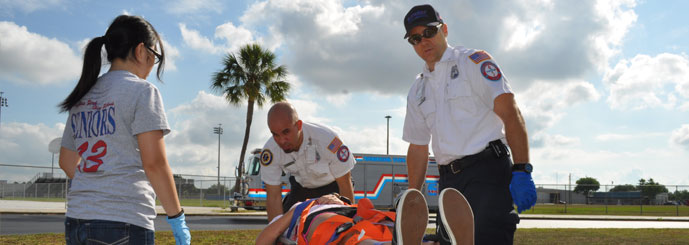More than 5,000 teens – enough to fill the entire student body of a small college – die every year in car crashes. Car accidents are the leading cause of death for teens in the U.S.[1] Major contributors to teen driving accidents include inexperience, distractions, darkness, and alcohol. According to the Institute for Highway Safety, teen drivers tend to overestimate their driving abilities and underestimate the dangers associated with driving. As a parent, you are in a key position to influence your teen’s driving behaviors. But how do you go about it?
Stress to your teens that you love them and want to see them grow into happy, healthy, living adults. Stress also that driving is a privilege, not a right. Set rules that your teen must follow in order to keep that privilege, and be sure to follow through on the consequences if your teen breaks the rules. Finally, set a good example for your teen by practicing safe driving yourself.
Here are some rules to help you start this lifesaving conversation.
Five Rules for Teen Drivers
1. Wear Your Seatbelt: Of any age group, teens are the least likely to buckle up.[2] Seatbelts save lives. Tell your teen to wear a seatbelt every time he or she gets into a car – as a driver and as a passenger.
2. On the Road, Off the Phone: A National Highway Traffic Safety Administration study found that use of cell phones and other handheld devices multiplied the risk that a driver be involved in a crash by three times.[3]Cell phone use includes making calls, texting, and surfing the Internet. The study found that the increased risk was a consequence of the distractions – visual, physical, and mental – that these actions cause. A recent survey by Pew Research found that 26% of 16-17 year old drivers text while driving, and 43% of drivers in that age group report talking on the phone while driving.[4]Tell your teen never to use a cell phone or other handheld device while driving.
3. No Alcohol: Although it is illegal in every state for teens to drink alcohol, 25% of young drivers killed in crashes had a blood alcohol level over .08, meaning that they were driving drunk. Stress to your teens that it is not only illegal for them to consume alcohol, it is dangerous as well – especially when driving is involved.
4. No Nighttime Driving: Twenty percent of teen crash deaths happen between 9:00 PM and midnight, and a full sixty percent happen between 6:00 PM and 6:00 AM[5] If possible, do not allow your teen to drive at night. Weekends and summer months also tend to be dangerous times for teen drivers, so talk to your teen about safe driving at these times as well.
5. No Teen Passengers: Teen passengers make it more likely that a teen driver will crash.[6] Do not allow your teen to drive unsupervised when other teens are in the car.
…And Two Rules for Parents:
Help Your Teen Practice Driving. The National Safety Council recommends that you practice driving with your teen driver as often as possible, but at least 30 minutes per week. [7] Guided, one-on-one practice will help your teen become a more experienced, competent driver. Remember to have patience and give praise throughout the learning process.
Before setting out, have your teen adjust the mirrors, seat and steering wheel. Have him or her practice stopping at various speeds, to see what the stopping distance of the vehicle is. This will especially come in handy while driving on major roadways. Discuss the skills you are teaching and their application in driving scenarios. Even asking your teen to narrate his or her driving can alert you to what is being focused on.
Be a Safe Driver Yourself. Your children learn to walk, talk, and tie their shoelaces from observing you, so it should come as no surprise that they learn driving habits in the same way. If you break your own rules, teens may not see the value in following them either. Set a good example.
Make sure you know the laws and practice what you preach. Also, time spent with your teen behind the wheel is important to their development of safe practices. It’s always a good idea for you to review the driver’s manual before advising your teen.
Resources for parents:
Have your teen sign a Safe Driver agreement so they know your expectations.[8] USAA also has an instructive video, “On the Road” for teens to watch with their parents.[9] Both of these provide great opportunities for discussions prior to hitting the road. Verizon Wireless has gotten involved in educating drivers about driving responsibly as well by providing facts about distracted driving.[10]
[1] Source: http://www.nhtsa.gov/Driving+Safety/Teen+Drivers/Teen+Drivers+Education/Teen+Drivers+-+Additional+Resources
[2] Source: http://www.nhtsa.gov/Driving+Safety/Teen+Drivers/Teen+Drivers+Education/Teen+Drivers+-+Additional+Resources
[7] Sources: http://www.nsc.org/safety_road/TeenDriving/Pages/DrivingPracticewithYourTeen.aspx, http://www.nsc.org/safety_road/TeenDriving/Pages/Teen-Driving-Infographic.aspx
[9] Source: https://www.usaaedfoundation.org/publications-media/videos/u33/on-the-road#.Uyi9Nl7sswO
[10] Source: http://www.verizonwireless.com/aboutus/commitment/safety-security/dont-text-and-drive.html



